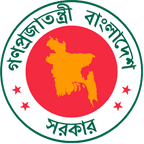Bangladesh Economy
Bangladesh proudly stands as an investment destination in South Asia. The steady growth in export, hard-working labour force and committed entrepreneurs supported by the pro-business and investment policies of the present government are leading country towards a high global competence. A strong domestic demand, high export growth and continued expansion of infrastructural facilities attributed to this growth amidst the fragile pace of global economic recovery.
Sustained economic growth has rapidly increased the demand for energy, transportation and urbanization. To achieve growth aspiration of becoming upper-middle income country by its 50th birthday in 2021, present government has taken enormous initiative for infrastructural development, expanding investments in human capital and increase female labor force participation. Improving infrastructure as well as the business climate would allow new productive sectors to develop and generate jobs.
Bangladesh’s per capita is US$ 2227 and gross domestic product (GDP) growth reached 8.15% (2018-19). GDP growth in agriculture, industry and services sectors are impressive, which were 4.19%, 12.06% and 6.39% respectively in FY 2017-18.
Bangladesh is known for its remarkable progress in reducing poverty and creating opportunities for its citizens. Bangladesh is among the 10 fastest growing economies in the world and has made commendable progress in human development. Bangladesh reduced poverty from 44.2% to 11.3%, life expectancy increased to 72.6 years, literacy rates and per capita food production increased significantly in the last one decade under the leadership of the Bangabandhu’s daughter Hon’ble Prime Minister Sheikh Hasina. This unprecedented fastest growth enabled Bangladesh to reach the lower middle-income country status in 2015. According to World Bank’s estimates (July 2015) -Bangladesh has become lower-middle income country reaching an annual income of $1,046 to $4,125. In 2018, Bangladesh fulfilled all three eligibility to be graduated the Least Developed Countries (LDC) for the first time and is on the right track for graduation in 2024.
Ready-Made Garments (RMG) export is the backbone of the country, which is almost 80% of the total exports, surpassed US$ 32 billion. Emerging middle-class domestic demand become an important driving force for economic activities. Competitiveness and manufacturing industries have been gradually taking sustainable root in the country. Bangladesh has now emerged as an important manufacturing base for textile, pharmaceuticals, finished leathers, light and medium industries, IT and shipbuilding.
Bangladesh has emerged as the second largest exporter in the world apparel market and is also doing exceedingly well in the exports of finished leathers and leather goods, frozen foods, jute and jute goods, pharmaceutical products, light engineering products and building small ocean-going vessels.
In 2021, Bangladesh posted US$ 38.75 billion export earnings while in the corresponding period the country registered import bills of US$ 65.59 billion. Most of the items in the import list are petroleum products, capital goods and industrial raw materials. Bangladesh has also attained impressive foreign currency reserve, as of June 2021 foreign currency reserves stood at US$ 46.39 billion. Under the present government led by the Hon’ble Prime Minister Sheikh Hasina access to electricity increased from 47% to almost 100% within one decade.
